Basket Weave Cutting Board
Step 5 – 1st Glue-Up: Light Colored Wood and Dark Edge Strips
Before assembling the cutting board I chose to glue the Walnut strips to the edges of the Maple strips. I use Titebond III which is food safe and works very well for cutting boards. It’s very important to clamp all the pieces tight and also use culls to keep the pieces flat until they dry.
Once the glue dries I run these strips back through the table saw and remove approximately 1/16″ from the first side of each piece. Then I turn the pieces over and adjust the table saw so that the width matches the previously cut 1-1/2″ wide Purpleheart. By doing this I’m trying to match the final width of all the pieces which makes the assembly look nearly perfect.
Step 6 – Cross-Cutting Pieces To Length
The next step really requires patience, planning and the old saying “Measure Twice, Cut Once”. This is also where it’s really important to have your design on a piece of paper. I numbered each piece on the drawing, then marked each piece of wood approximately before I did any cutting. If you want the board to truly look like pieces of wood that are weaved together then it’s critical that you cut each piece and discard pieces in between adjacent pieces so the grain looks natural.
As you can see in the photo above, I started with the dark pieces that are all squares. If you look closely, all the grain is running along the length of the board. The pieces in each row were cut from the same strip. In fact, where the gaps exist, I cut out that block and tossed it. This ensures that the grain in each piece is where it would have been along the strip if the pieces were truly “woven” together.
To cut these pieces you can do it one of two ways. The first way is using a miter gauge along with a stop block setup on the fence. Once you get the fence in the right place so it cuts the length you want the pieces should all be exactly the same. The other method which I prefer is using a cross-cut sled (I have an article on how to build one in the workshop section if you’re interested in building one). Regardless of how you cross-cut the pieces, it’s really critical that you be precise. As you can see below, I was able to get my pieces within 0.001″ of the same width and length.
After cutting the squares I moved on to cutting the pieces of Maple with the Walnut edging. Before removing the stop block for the Purpleheart squares I cut six pieces of the Maple the same size (NOTE: be sure that you cut those six pieces off the strips that will be used for the adjacent longer pieces and keep track of which row they go in). Then I used the cross-cut sled with a stop block and a scrap piece of wood until I had a piece cut to 4-1/2″ (the width of 3 blocks).
Now I cut all of the long pieces being sure to keep track of which row they belong in and the matching adjacent pieces so the grain lines up. To make the illusion look really good be sure to cut out the short pieces where the pattern is covered by the perpendicular pieces. As you cut the pieces keep track of them by loose fitting the design just like I did in the photo above.




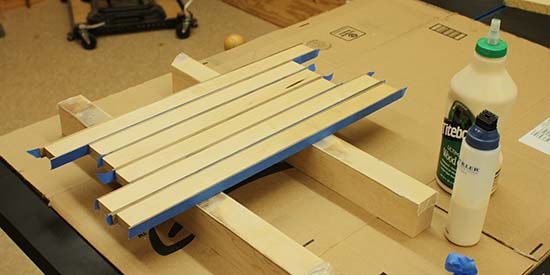

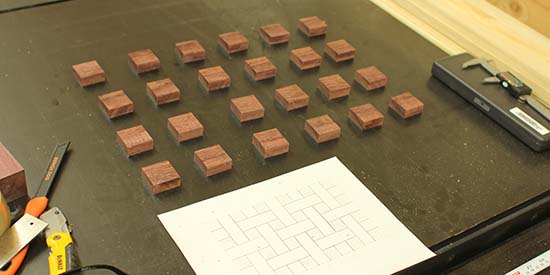
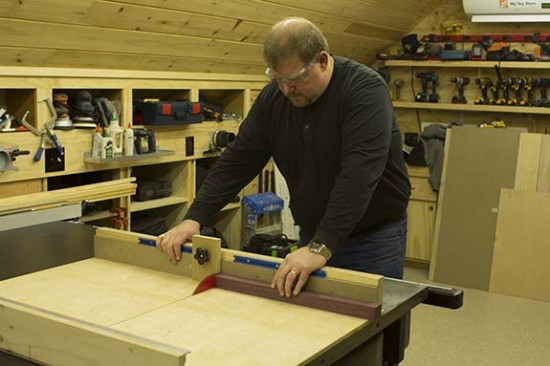
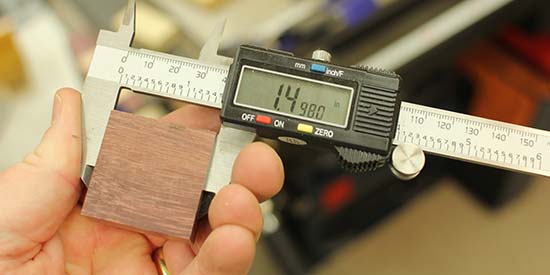
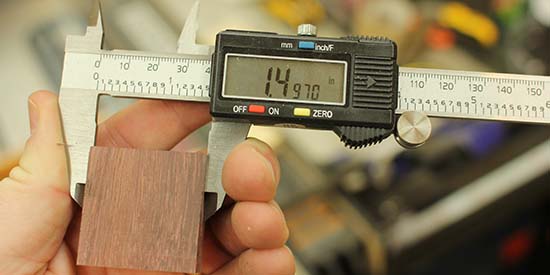
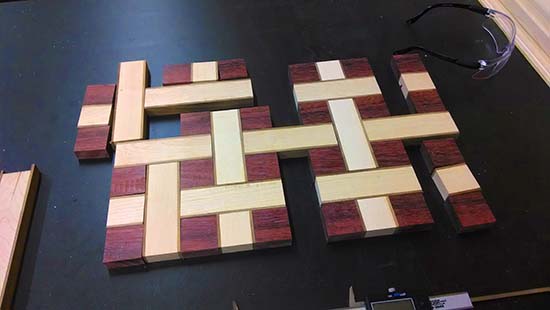









I am an experienced cutting board builder and I can honestly that is one of the coolest designs I have seen in a long time. At first it looks like it would take for ever but once I read the instructions it realized any one with adequate woodworking skills could build cutting board. I urge all of the readers interested in building a cutting, try this one and than you can tell everyone that you have your very own handmade custom cutting board, and you made it yourself.
I wish I had found your video a month ago. I am currently sanding out a basket weave bowl, cut on a scroll saw. My three glued up pieces ended up being slightly wider than planned, but I wasn’t smart enough to run them thru the table saw. That resulted in having to adjust the squares. Glue up was a disaster. I started in the center and worked outward. After that mess I figured the best approach was to use a 90 degree form, like you did.
I would have liked to have seen another shot or two of your finished glue up. I wanted to see how you clamped it all together.
Thanks for your video as it answered a lot of my questions.
I like your work and it is pleasing to know someone can share there good work,I will be making this board as I have made a few others,thankyou.
Hello, I have a question regarding the sizes of the wood you need to cut before, I made a model in Sketchup but when I add the sizes and look at it, it the thin strips of the walnut wood do not feel like 1/4, The walnut wood looks a bit too thick, I would like to check before I attempt to make this if the thickness for the walnut is 1/4 or if it is less.
Thanks,
I believe mine were about 1/8 to 3/16″ wide…certainly not 1/4″
any issue with grains going different directions
Not at all…still looks like new!
May I post part of this on my personal blog if I place a reference to this website?
Monsoon http://www.monsoondressestore.com
Sure
Beautiful board. I’m going to start one tomorrow. This will be my first basket weave board. I build end grain boards. Just curious. Have you run the finished board through a planner? Wondering if the different grain directions would plane ok.
I was thinking about it and decided I didn’t want to risk all my hard work.
Nice, Im getting to work on this today. I have everything planned out and I’m using purple heart, walnut and oak. Thanks for the great tutorial!
Great timing Todd. I’m making Christmas gifts of all kinds. Cutting boards were definitely in the mix. I enjoyed your step by step instructions including the tips! My only wish was for some pictures together with the text. I’ve always been a visual kinda guy, I can build just about anything if I see it I can build it.
I’m still going to give it a shot because the end result is awesome. So thank you for your time, great job!
Jason, is there anywhere to see your finished result?
Hi Todd,
I just made one from maple with cherry edges, with walnut for the cross squares. I just took it out of glue up and there are 2 hairline light gaps between a few squares. I ran all of the pieces through my tablesaw during one operation with no change to the fence. So the squares are all the same size and the longer pieces are equally wide. How did you get the longer pieces to be exactly three times the length? I think that is my issue.
Great job
What blade did you use on your table saw??
Thanks
It’s likely a Diablo (I honestly can’t remember), fine blade.
When you did your glue up did you have time to spread the glue evenly or did you not ?
Very nice work.
Plenty of time. The glue doesn’t set up that fast.